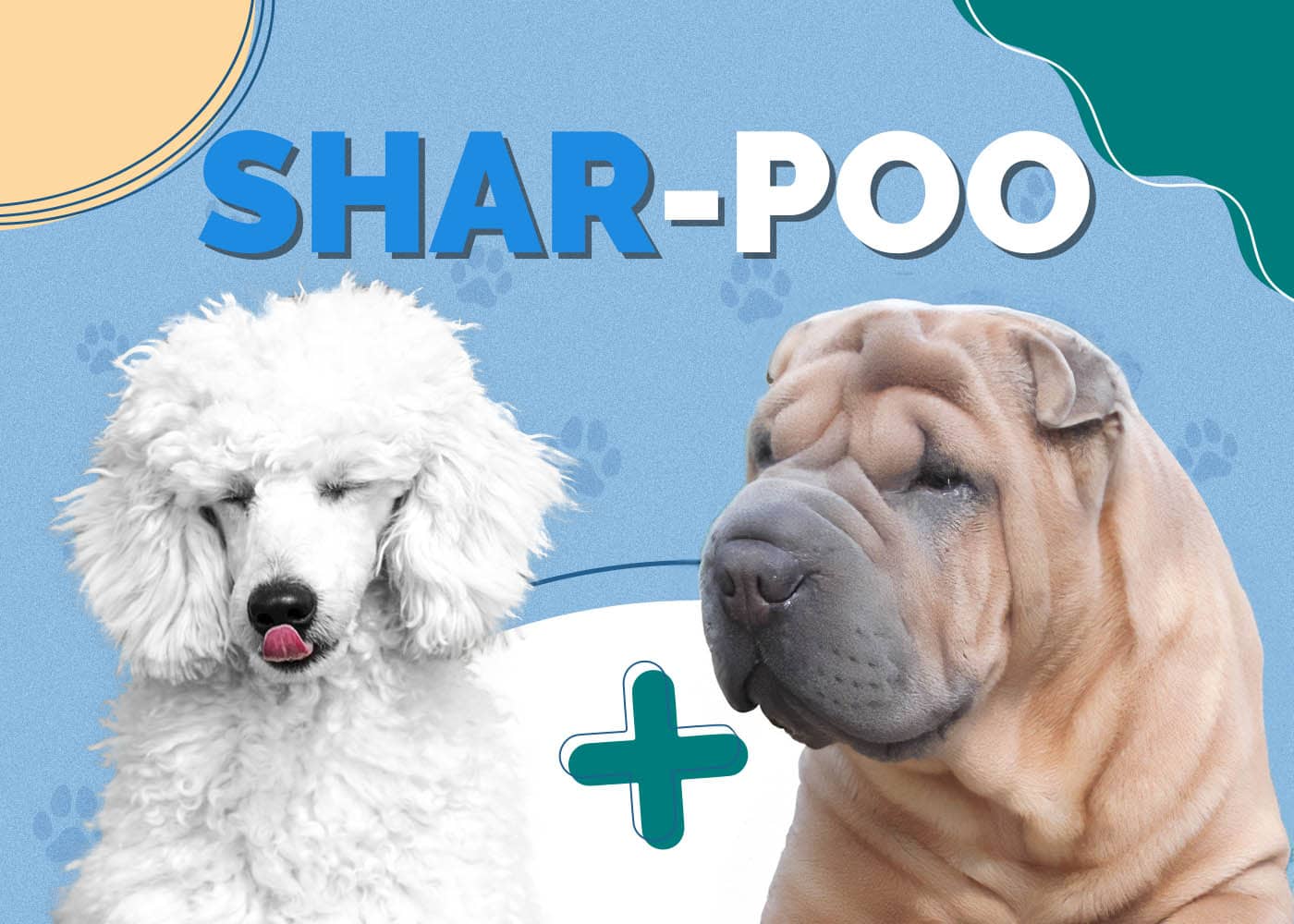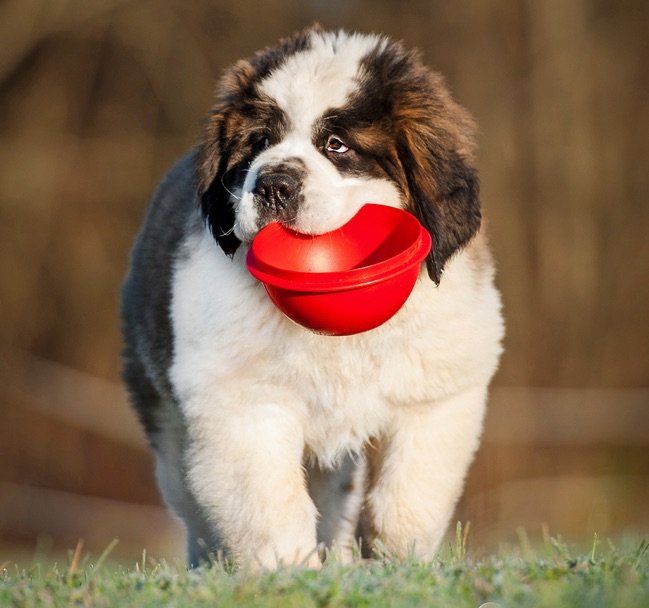How to Protect Your Dog from Hawks, Owls & Other Birds of Prey
Updated on
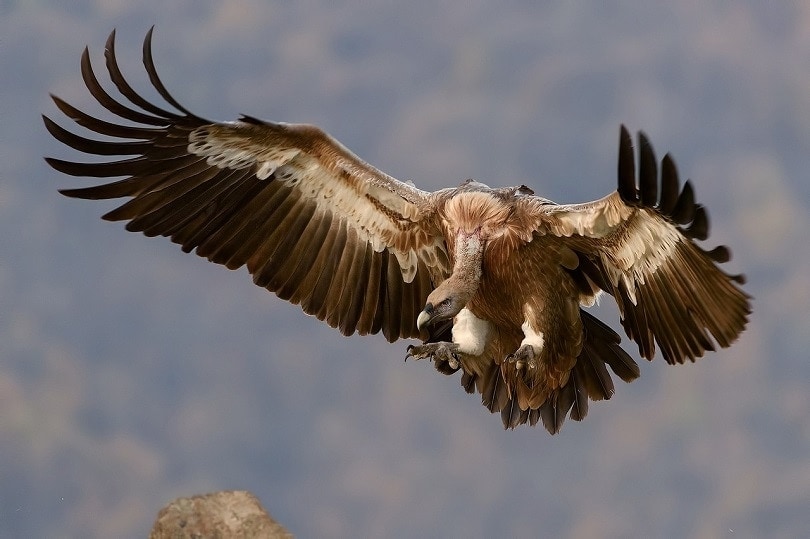
Dogs come in all shapes and sizes, including very small ones. While most dogs are small for a time when they are puppies, other dogs stay very small well into adulthood. If you have one of these smaller dogs, you may need to worry about hawks, owls, and similar birds. While these birds evolved to eat small prey, your small dog could easily become “small prey.”
This is a bit of an unusual problem to have, so it may be challenging to find solutions to this problem. Luckily, there are quite a few things you can do to protect your dog from wild predatory birds. We’ll discuss several of the things you can do in this article.
Do Hawks Attack Dogs?
It may seem like a myth, but birds of prey will attack dogs. Some are actually quite large, so they may attack larger dogs than you may imagine. In fact, Golden Eagles are known for attacking wolves. If they’ll attack a wolf, they will absolutely attack your dog.
Smaller dogs are often mistaken as the bird’s prey. Usually, these birds eat rabbits, snacks, and other small animals. However, they are also opportunistic predators. This means they will eat just about everything they can, including a small dog.
Hawks may also attack if they feel threatened. If a larger dog ends up a little too close to their nest or acts aggressively towards them, they may decide to drive the dog back. Usually, this is done through a lot of scary swooping. However, the hawk isn’t really trying to hurt the dog and will stop once the canine leaves the area. They’re just trying to be scary.
Most predator animals are fairly quiet. They have to be to sneak up on rabbits and other animals. However, this also means that they can sneak up on your dog. While you may think that your dog could just run and hide, they may not always see the bird until it is too late.
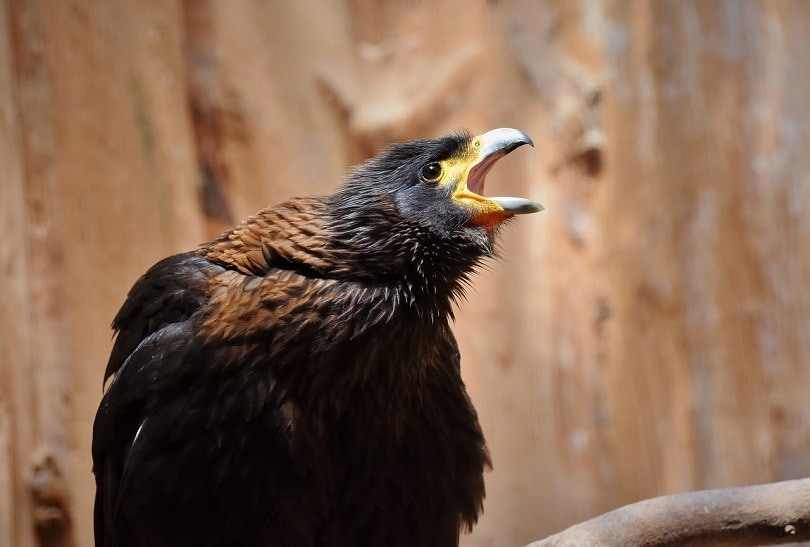
How Much Weight Can Birds of Prey Carry?
The exact weight a bird can carry depends a lot on their size. However, some are simply designed to carry more than others. Most birds of prey are also smaller than you might think, which also means that they can carry much less.
Red-tailed hawks are only 3 pounds, as are great horned owls. These birds just aren’t made to carry much, as they usually prey on mice and similar animals. Eagles can often reach over 15 pounds, though. However, they typically go after prey that is much smaller.
The wind and weather conditions can also play a significant role in the bird’s carrying capacity. Figuring out exactly how much a bird can carry is difficult since it isn’t easy to test. Of course, they can likely carry less than their body weight, even in perfect conditions. That means that a red-tailed hawk can only carry about 2 pounds at max, which is smaller than most dogs.
Typically, smaller birds of prey are not dangerous for dogs. They just can’t carry very much. They could do some damage if they wanted to, but this is going to be extremely rare. However, if you have a 1- or 2-pound dog, you may still need to worry about these birds.
Eagles and larger birds are going to be the main issue, as they can carry more. They could likely pick up a dog up to 5 pounds, though some can pick up larger animals. This includes some very small breeds, as well as most puppies.
With that said, birds don’t necessarily need to carry off their dinner. Some will attack larger animals and then eat them where they are. This puts slightly larger birds in danger, though this is going to be rare and only occur when the bird can’t find more appropriate food. If you have a dog that would be unable to fight off a bird, you may consider providing them with some protection.
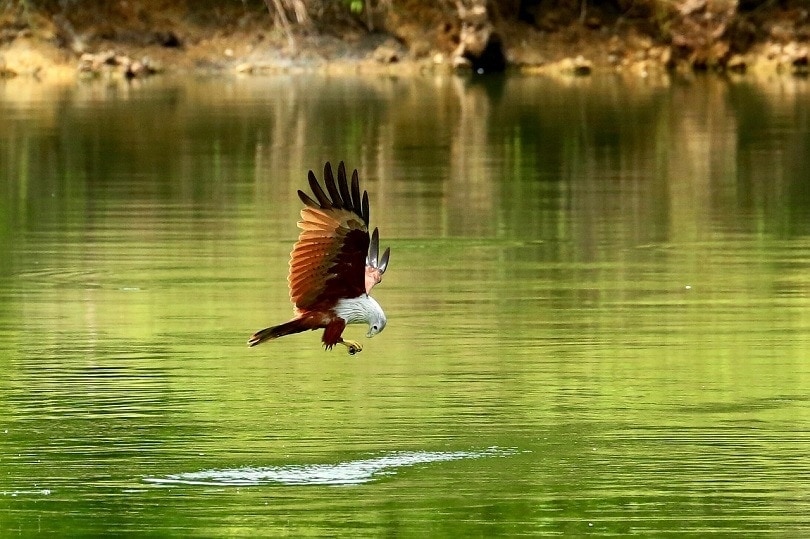
Are Hawks Dangerous to Dogs?
Often, people are most worried about a hawk swooping in and carrying off their small dog. However, this is not usually how these sorts of attacks go. In most cases, the hawk will maim the dog quite a bit first with their talons. It isn’t that the talons gentle pick up your dog; they go through the abdomen.
Obviously, even if the dog ends up not being carried off, it would have caused serious damage. Most dogs don’t actually get carried off. Usually, the bird attempts to pick the dog up but quickly changes their mind when the dog starts fighting back the teeth. Furthermore, the bird can misjudge their carry capacity and be unable to pick the dog up after an attempt.
Even if the dog doesn’t get carried off, they can be seriously damaged by the bird’s talons. Smaller dogs are obviously more at risk and less able to defend themselves. Even medium-sized dogs can be damaged by predator birds, though. Those talons are sharp and unforgiving.
How to Protect Dogs From Hawks
For centuries, people have been trying to protect their animals from birds of prey. Usually, these are smaller livestock, like chickens. However, many of the techniques developed for these animals may also be suitable for protecting smaller dogs.
With that said, some of the techniques commonly used are inhumane and may be dangerous for our dogs. We are just starting to understand how some of these techniques may harm the environment. Others may not work anymore due to environmental changes. We will not recommend these techniques.
For instance, some people recommend clearing out the natural prey animals in your area. However, while this once meant that the bird would move to a different territory, there isn’t always available territory left anymore. Deforestation and development may not allow the birds to find another suitable location. Therefore, they may simply become hungrier as they are unable to find prey, which may make them more likely to attack your dog. At the same time, many prey animals are now endangered, making it illegal to remove them.
While some of these things no longer work or may be illegal, there are several humane andlegal options for you to choose from.

 The 7 Ways to Protect Dogs From Hawks & Other Birds of Prey
The 7 Ways to Protect Dogs From Hawks & Other Birds of Prey
1. Tape
For one reason or another, reflective metal tape frightens most birds. There are several theories as to why this might be. It may be because it reflects the light strangely, which may deter birds from the area. Alternatively, they make bizarre sounds in the wind that may be off-putting to birds.
To deter birds, you can hang long strips of tape on trees, awnings, or fences. Be aware, though, that this will frighten away most birds, including songbirds. If you’re looking for your bird feeder to remain populated, this is probably not the best option for you.
There are several reflective tape options on the market that may work. You should choose thicker options that are at least an inch or two, as anything smaller than this may not actually be visible. Besides that, the kind you get really doesn’t matter.
Be careful to avoid littering with the tape. If a piece comes loose, retrieve it and replace it.
2. Spikes
This may seem a bit barbarous at first, but bird spikes are simply designed to make perching difficult for birds. They don’t harm the bird and aren’t actually that sharp. They simply add a texture that isn’t very suitable for birds to sit on.
Once they don’t have somewhere to perch, many birds will find a different spot. You can use this on the trees around your yard to keep predator birds from perching and watching your dog. Many birds hunt from a perched position, so this can eliminate the risk of them deciding that your dog is a target.
Of course, songbirds will be unable to perch on the branch either. You can always put them on bigger branches only, while the smaller birds can use the smaller branches. You can also use longer spikes, which make it unable for larger birds to perch. However, the smaller birds can fit easily between the spikes and don’t seem to mind them. They actually often build nests on the spikes.
Actually, applying them can be somewhat of a challenge on taller trees, as you’ll need to reach the branches for application. Furthermore, depending on how many trees are in your yard, this may be unpractical.
How you apply the spikes varies by brand. You can often use screws, glue, zip ties, or basically anything that will keep the spikes in place.
3. Bird Balloons
These balloons are basically large, floating beach balls. They often have eye markings painted on them. This confuses the bird, which thinks they are giant predators. Therefore, many birds will steer clear of these balloons, including larger birds of pet.
Tassels and other things may be added to simulate movement, which may scare birds further. These balloons are designed to stay inflated for a long period so that they don’t need to be replaced often.
This method will scare away most birds, including little ones you may want in your yard.
4. Scarecrow Owls
These plastic replica owls are perfect for scaring away a variety of animals, including some birds of prey. Because owls are predatory, many other birds don’t want to live close to them. Therefore, they will find another area to hang out in.
This seems to work mostly on smaller birds, though. Some predator birds may avoid owls, but many might not care. So, this method may not work best for larger predator birds.
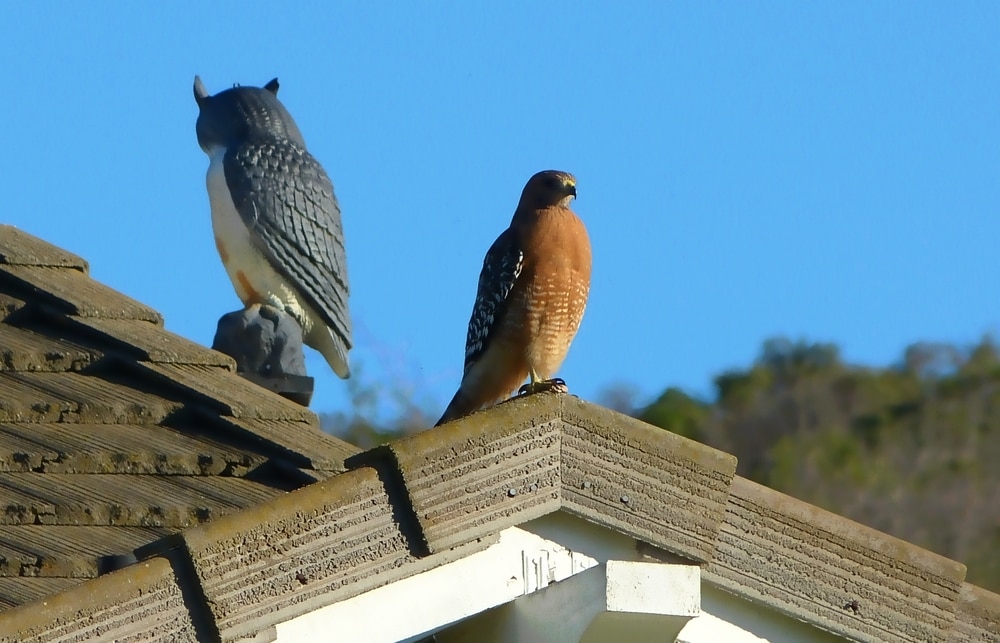
5. Hawk-Proof Netting
To protect things like chickens, many people use netting. This goes over the area the chickens are in, which is typically surrounded by a frame. This keeps the livestock safe from birds since they can’t fly through the netting. You can do the same thing for your canine. Basically, you’ll be making a protective cage for your pooch to hang out in.
This is a labor-intensive option. It involves building a frame and putting up the netting. However, it pretty much guarantees that your dog won’t be injured by a hawk or similar bird. It is the most protective option by all standards.
6. Use a RaptorShield
The RaptorShield is a protective device that your dog wears. It is made of puncture-resistance polycarbonate, which a raptor’s talons can’t get through. It’s like a shield that your dog wears on their back that prevents attacks from birds of prey and other animals from doing much harm. It is especially helpful against predatory birds, as they usually attack from the top.
It comes in many different sizes designed for smaller dogs. It stays in place thanks to two straps. Choosing the correct size is important, as you don’t want the raptor to be able to get underneath the shield.
7. Use a Hawkshield
The Hawkshield is a similar product. It is designed to protect small dogs from raptor attacks. However, instead of basically just being armor, it is instead covered in spikes. These spikes prevent the bird from getting a good grip on the dog and are rather uncomfortable. This shield is also useful against other animals like coyotes since the spikes can cause pain should they bite your dog. Basically, this little jacket turns your dog into a porcupine.
This vest is also made with Kevlar, which is the same material used in bullet- and knife-proof vests. If the hawk manages to grab the shield, it is made to break away, leaving your pooch behind.

What to Do With Birds of Prey Attacking?
If a predator bird still attacks despite your best effort, it is essential to react properly. It could be the difference between life and death for your dog.
1. Pick Up Your Dog
As soon as you notice a bird of prey in the area, you should pick up the small dog. The bird will not try to grab the dog from your arms, so you typically don’t have to worry about attacks as long as you’re holding the puppy. If you are near a nest, the bird may attempt to scare you off. These encounters usually do not cause any injuries, though. The bird simply swoops above your head in an attempt to scare you.
2. Use a Flashlight
If it is at night or twilight, you can scare most birds away with a flashlight. This works particularly well on owls, but most other birds will be scared of sudden light in their direction as well. If you must take your dog outside at night, take out a flashlight to be safe.
Direct the beam at the bird or at least in their direction if you’re having difficulty keeping track of it.
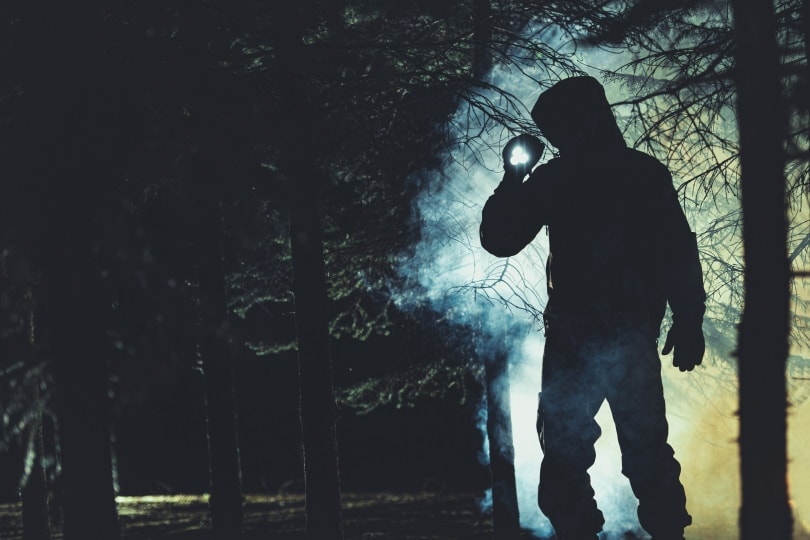
3. Be Loud & Make Noises
Like most animals, hawks are often scared away by loud sounds and big arm movements. To scare a bird away, you sometimes just need to be as loud and move as much as possible. You can easily intimidate a bird by yelling and throwing your arms around a little bit.
4. Seek Veterinary Attention
If a bird of prey makes contact with your dog, you should see a vet as soon as possible. Obvious injuries like fractures and broken skin can occur. However, there are several other problems that may develop that aren’t so obvious. Dogs may attempt to hide hairline fractures, especially if they are pumped with adrenaline from the hawk attack.
Even if the damage isn’t significant, infections can be introduced, as well as other diseases. Veterinary care is essential to ensure that the dog heals correctly.
Conclusion
While you’re likely going to have birds of prey flying around no matter where you live, there are some things you can do to protect your pets, especially if they’re small breeds. Try any number of the tactics we’ve listed, and if your pet happens to have an encounter with one of these birds, make sure you take them to the vet!
- Related Read: How to Keep Birds Away From Dog Food (7 Proven Methods)
Featured Image Credit: Free-Photos, Pixabay




